Prahar took two identical heating elements and con-nected them to a battery in two different ways as shown in the figure. When he switched ON the switch, is the heat developed in each element the same or different in both the cases ?
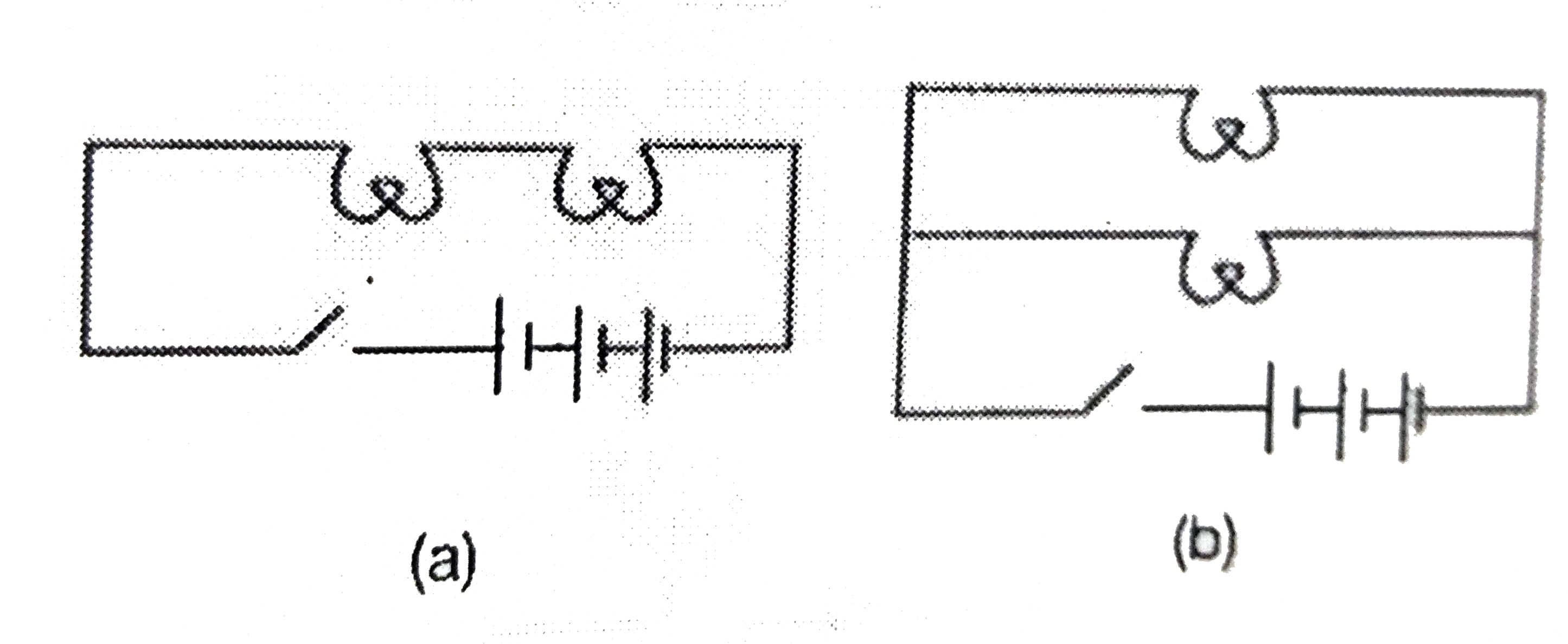
Heat generated in two identical heating elements depends on the current that flows through them. More the current that passes through an element, more is the heat generated. In Fig. (A) heating elements are connected in series and in Fig. (B) heating elements are connected in parallel. The current that flows through the heating elements when they are connected in series is less than the current that flows through them when they are connected in parallel. As such more heat is generated when they are connected as shown in the Fig.
Topper's Solved these Questions
Similar Questions
Two identical slabs of given metal are joined together in two different ways as shown in figure. What is the ratio of the resistance of these two combinations?
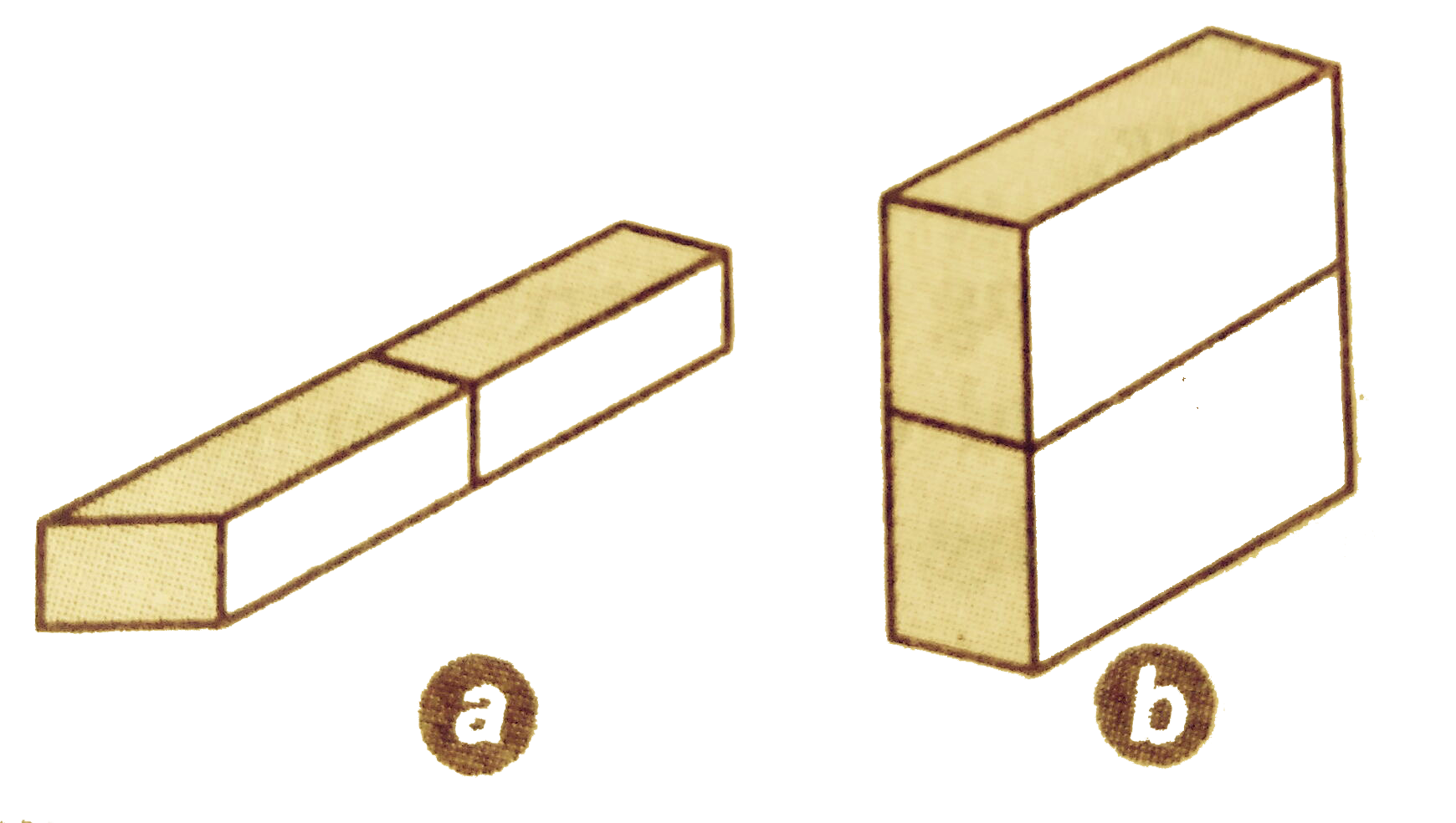 View Solution
View SolutionThree capacitors each of capacitance C=2μF are connected with a battery of emf 30 V as shown in the figure . When the switch S is closed , the heat generated in the circuit will be
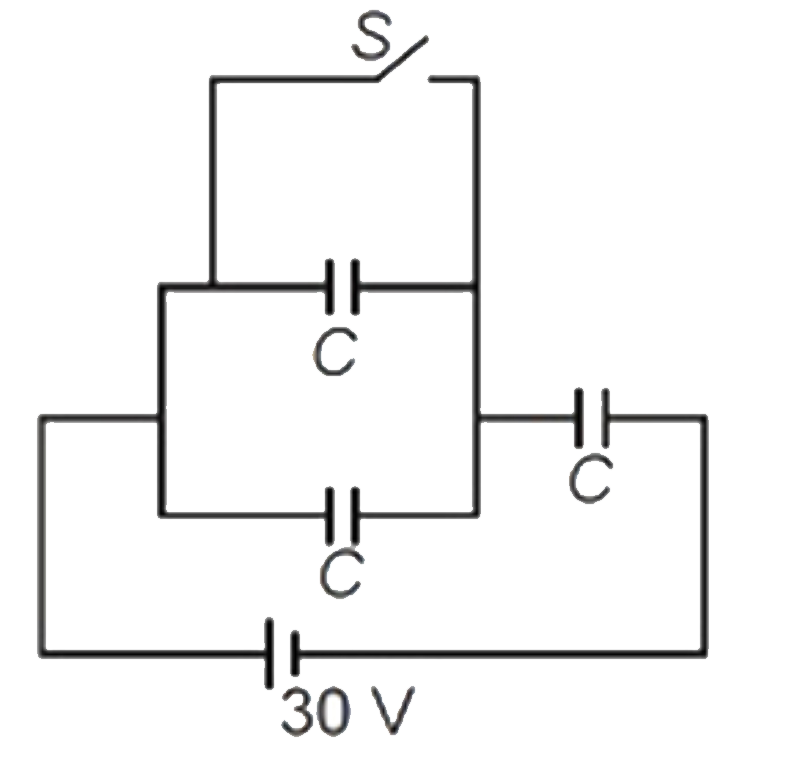 View Solution
View Solution
Knowledge Check
- Question 1 - Select One
Two capacitors A and B are connected in series with a battery as shown in the figure. When the switch S is closed and the two capacitors get charged fully, then
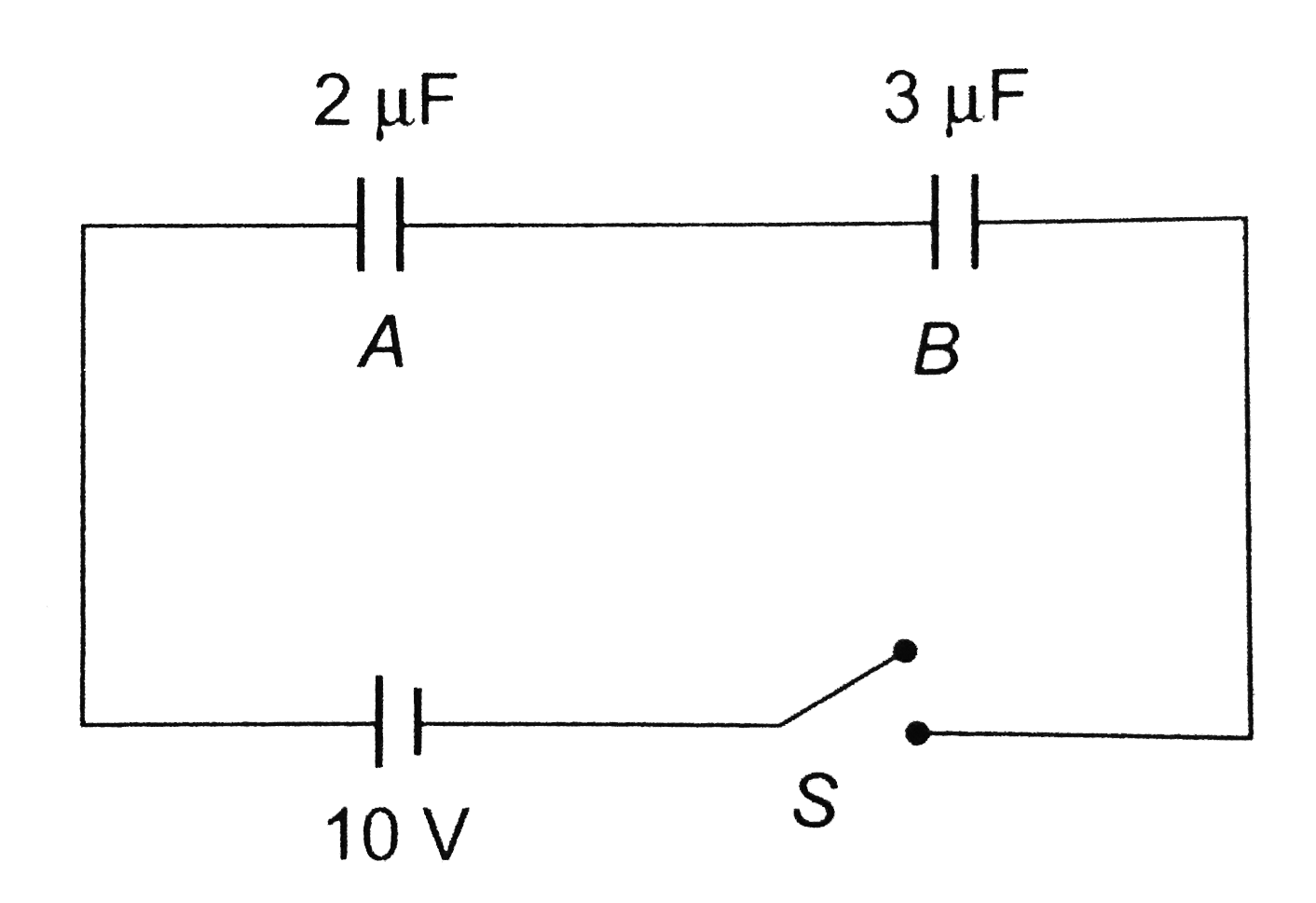 AThe potential difference across the plates of A is 4V and across the plates of B is 6VBThe potential difference across the plates of A is 6V and across the plates of B is 4VCThe ratio of electrical energies stored in A and B is 2:3DThe ratio of charges on A and B is 3:2
AThe potential difference across the plates of A is 4V and across the plates of B is 6VBThe potential difference across the plates of A is 6V and across the plates of B is 4VCThe ratio of electrical energies stored in A and B is 2:3DThe ratio of charges on A and B is 3:2 - Question 2 - Select One
Two similar p−n junctions can be connected in three different ways as shown in the figure. The two connections across which the potentional difference is same are.
(a)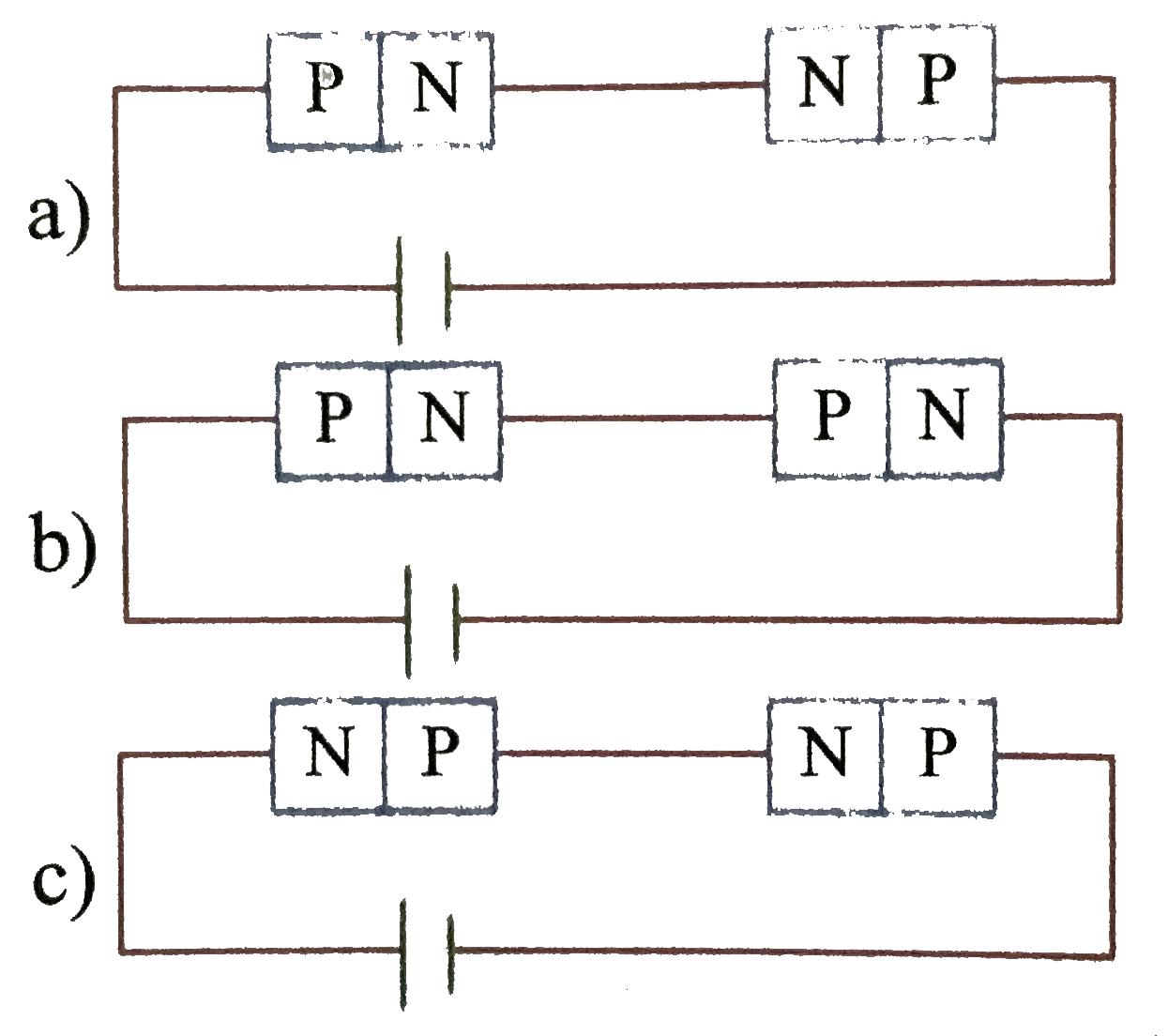 Acircuit a and bBcircuit b and cCcircuits a and cDall the circuits
Acircuit a and bBcircuit b and cCcircuits a and cDall the circuits - Question 3 - Select One
Two similar planoconvex lenses are combined together in three different ways as shown in the adjoining figure. The ratio of the focal lengths in three cases will be
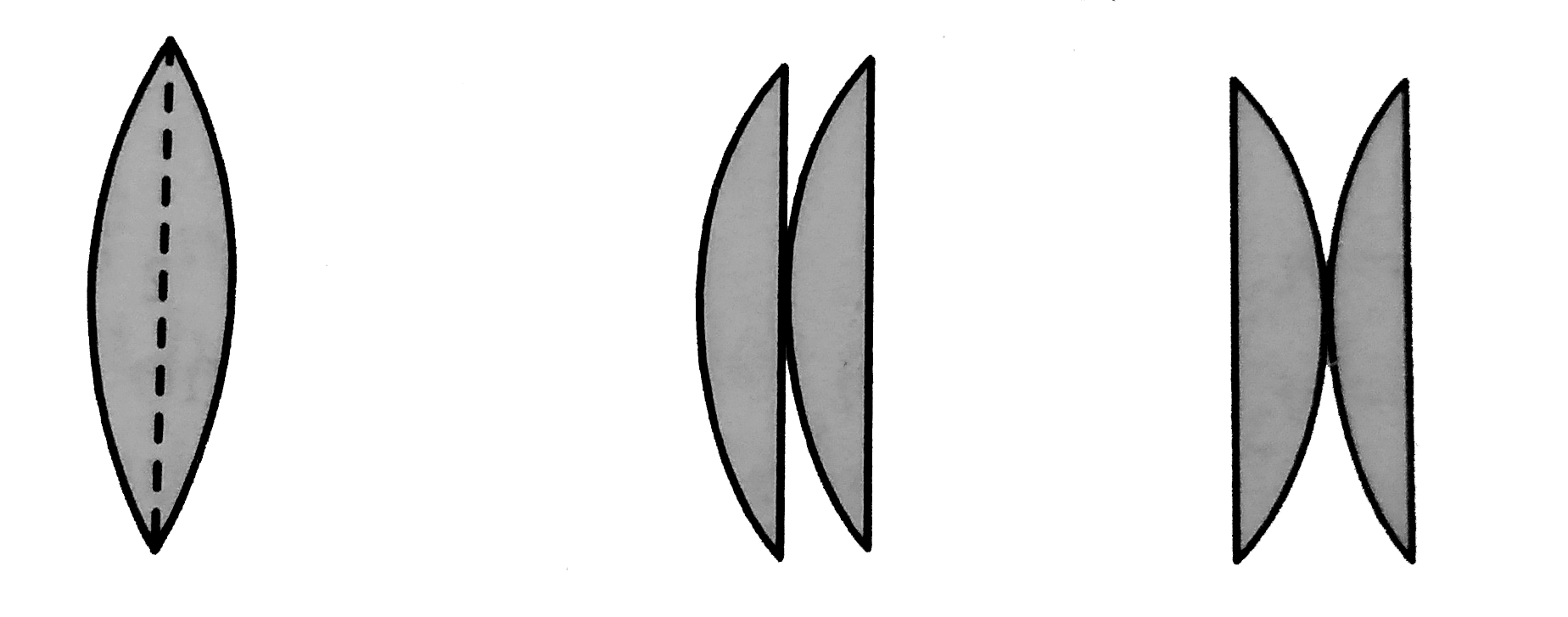 A2:2:1B1:1:1C1:2:2D2:1:1
A2:2:1B1:1:1C1:2:2D2:1:1
Two spheres of radii R and 2R are charged to potential V0 and 2V0 and are connected by a battery of emf V0 as shown in figure. When switch 'S' is closed then
View SolutionTwo identical positively charged particles P and Q are placed between two parallel paltes having a potential difference of V volts between them as shown in the figure. Which of them will experience larger force?
 View Solution
View SolutionAn inductor L, a resistanc eR and two identical bulbs B1andB2 are connected to a battery through a switch S as shown in the figure . The resistance of coil having inductance L is also R. Which of the following statement gives the corrrect description of the happenings when the switch S is closed?
 View Solution
View SolutionAn inductor L , a resistanece R and two identical bulbs, B1 and B2 are connected to a battery through a switch S as shown in the figure. The resistance R is the samem as that of the coil that makes L .Which of the following statement gives the correct description of the happenings when the switch S is closed
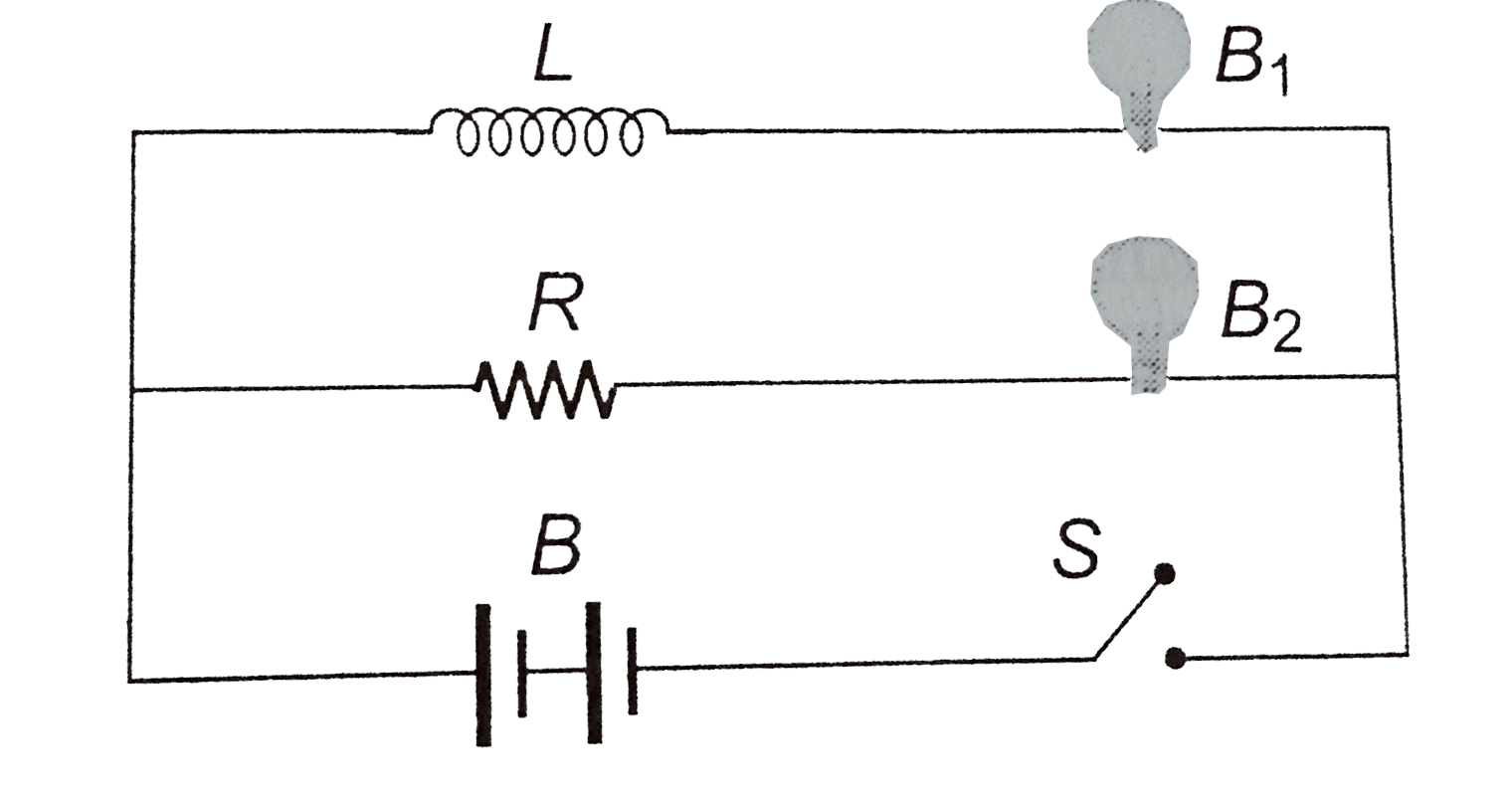 View Solution
View SolutionTwo capacitors C1=1μF and C2=3μF each are charged to a potential difference of 100V but with opposite polarity as shown in the figure. When the switch S is closed, the new potential difference between the points a and b is
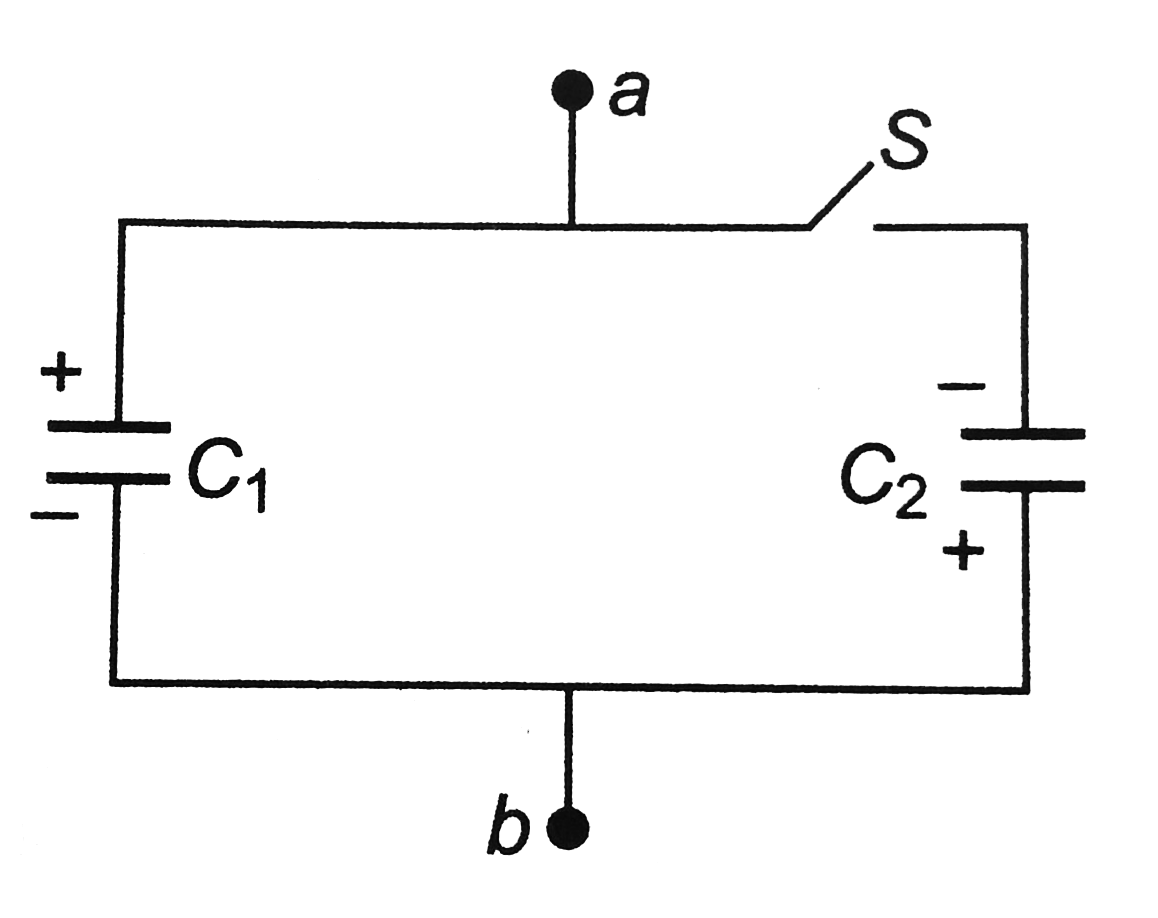 View Solution
View Solution

